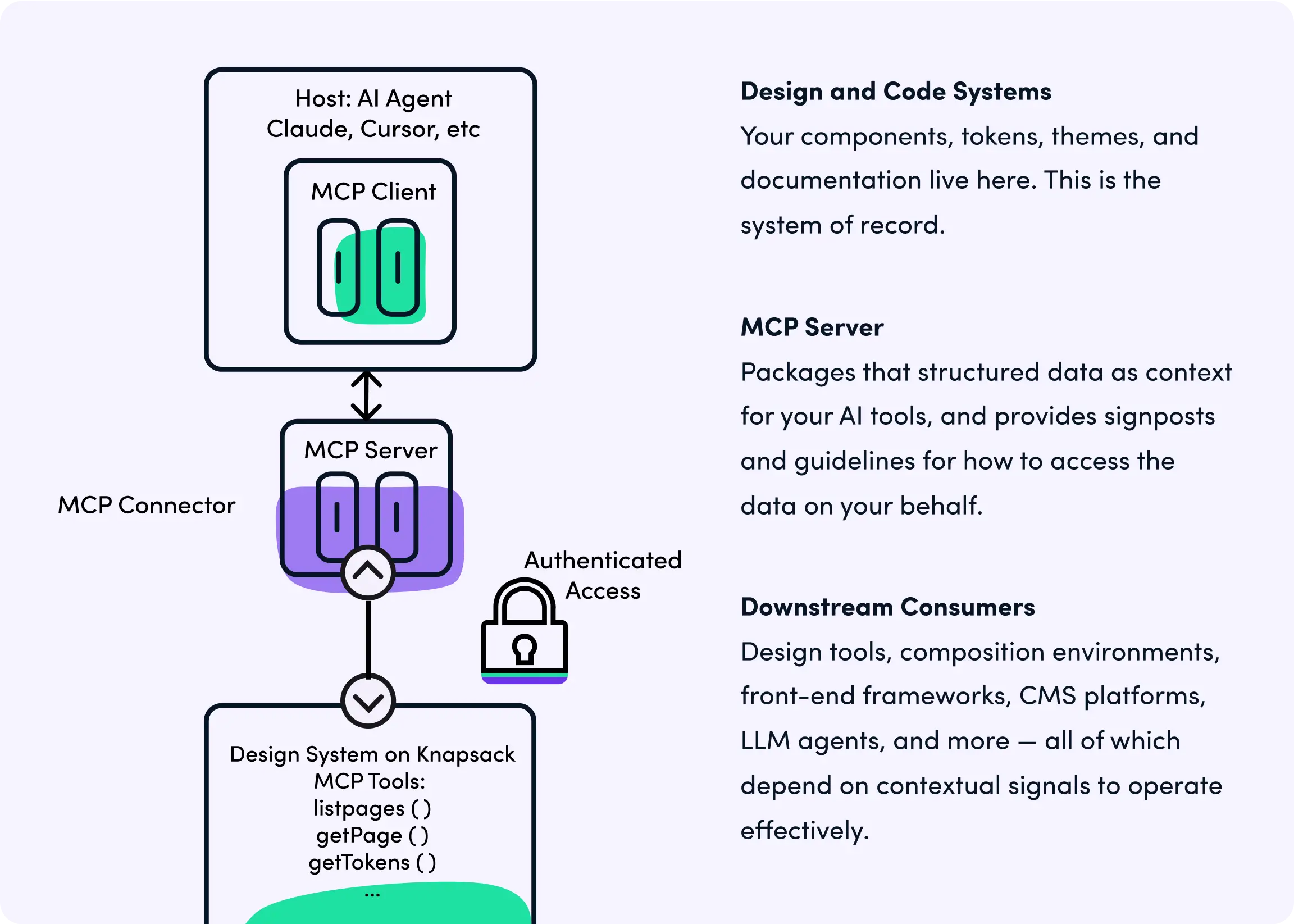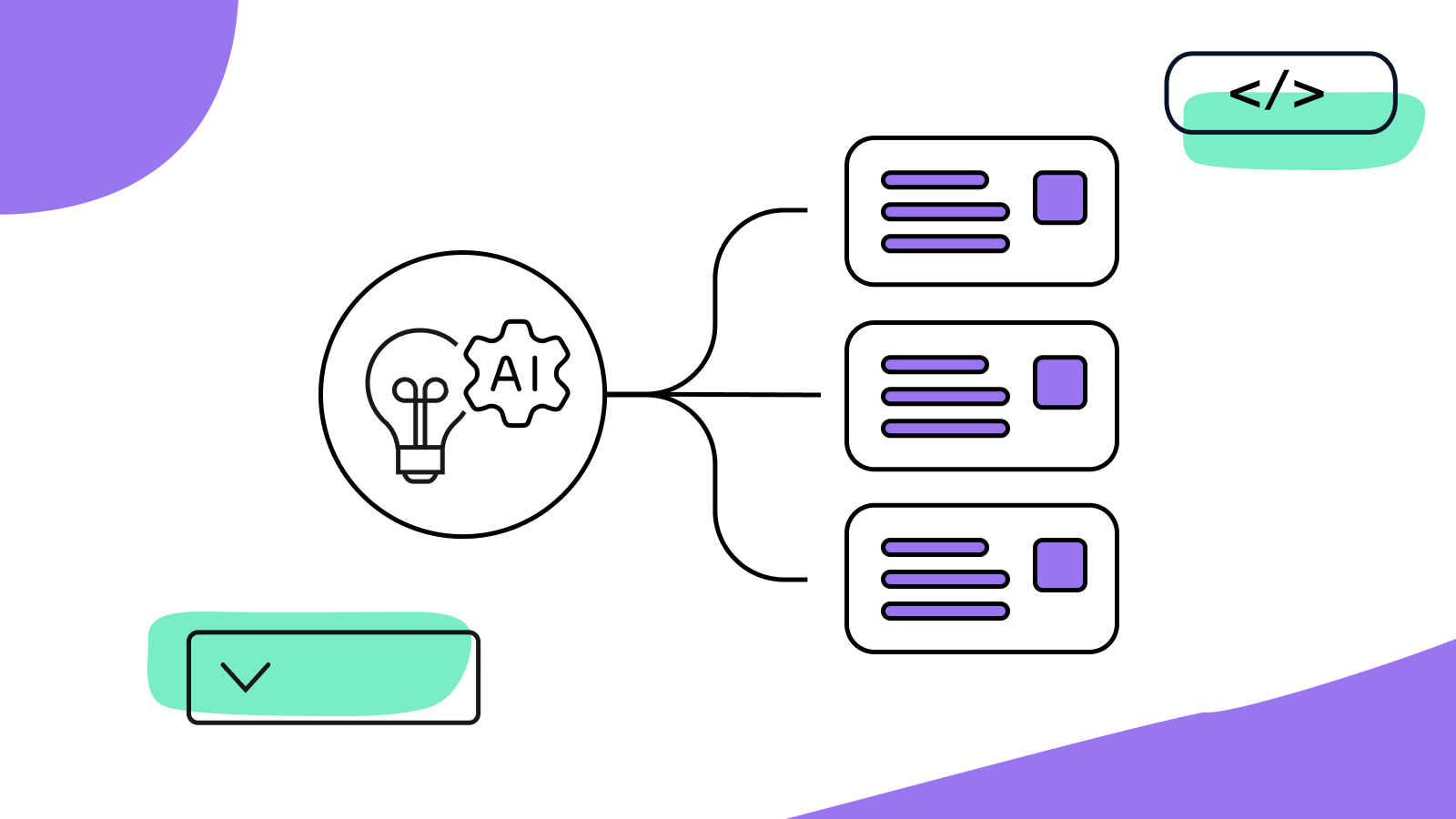Enterprise product teams are under pressure to do two things right now: ship faster with fewer resources, and integrate AI tools and workflows in hopes of gaining some undefined competitive advantage.
The first challenge isn’t new. It’s a perennial problem for enterprise leaders. The hiring glut of the past decade was the blip, not the baseline. But just because the problem is familiar doesn’t make it any easier to solve.
The second challenge is new, and the pressure to move is immense. Organizations are scrambling to invest in AI while the technology evolves at breakneck speed, creating a sense of urgency without clear direction.
So how do you feed two birds with one scone?
You introduce tools and workflows that leverage MCP (Model Context Protocol) servers — infrastructure that empowers your existing teams to work smarter today and sets you up to use AI intelligently tomorrow.
In this post, we’ll explore what an MCP server is, what it does, how Knapsack’s implementation adds real value across enterprise teams, and why this infrastructure is foundational for the future of AI-powered digital production.
What Is an MCP Server? (and Why It Matters)
At its core, an MCP server provides connection and context between data sources, LLMs, and AI agents.
They act as translators: intermediaries that help AI systems understand what tools are available, what data is relevant, and how to use it. Without that context, even the most powerful model is just guessing. With it, AI becomes purposeful, aligned, and usable within your actual production environment.
They don’t just move data. They make it meaningful.
In digital product workflows, that means going from “Here’s a button” to: “Here’s a button, here’s when to use it, what it looks like in light and dark themes, how it behaves in regulated industries, and what it connects to.”
MCP servers make it possible for humans and machines to communicate effectively across messy, distributed tech stacks. They let teams move faster today and lay the groundwork for AI that’s actually useful tomorrow.
Where MCP Fits in the Digital Production Stack
To understand the value of an MCP server, you have to look at where it sits in the flow of digital product development.
Most modern teams already have the raw ingredients: design systems, component libraries, token sets, documentation, and maybe even some prototyping tools. What they’re missing is a way to connect those assets to the tools, environments, and agents that actually use them.
An MCP server sits in the middle of the stack, between your source of truth and your systems of action, providing the structure and context that everything downstream needs to move faster and stay aligned.
How MCP Connection Works

The Value of Knapsack’s MCP Server
Knapsack is already a powerful engine for digital production. It doesn’t just store tokens and components. It creates a dynamically maintained, structured system of record. That system is organized for reuse, built for enterprise scale, and readable by both humans and machines.
This alone delivers massive value: the ability to prototype with production-ready code, clear documentation, stronger design governance, and tighter handoffs between design and engineering. But when you layer an MCP server on top of that system, the value compounds.
Knapsack’s MCP server takes your system data and makes it portable, queryable, and actionable across your entire ecosystem.
That unlocks:
Knapsack operationalizes your design system and gets it AI ready. The MCP server scales it across teams, tools, and AI — and begins to power what’s becoming the modern enterprise’s intelligent product engine.
Turning Your Design System into an Intelligent Product Engine
Design systems were built to solve human problems: alignment, consistency, scale. But the next generation of digital production isn’t just about making things easier for people. It’s about making systems understandable and usable by both humans and machines.
With Knapsack’s MCP server in place, your design system becomes more than a set of guidelines or reusable parts. It becomes an intelligent product engine. A structured, contextual system that powers automation, informs AI agents, and dynamically supports decision-making.
Imagine tools that know exactly what’s in your system and how to use it. Agents that can compose prototypes (aka vibe code) within the guardrails of your brand. Workflows that start with human input and scale through machine output. This isn’t a distant vision. It’s the natural evolution of structured, centralized systems built on context and Knapsack is building the capabilities that will define the intelligent product engine for the next era of digital production.
Infrastructure for What’s Next
We’re at the beginning of a paradigm shift in how digital products are built. Enterprise organizations need to invest in the infrastructure that will allow them to create an intelligent product engine and capture the exponential benefits of building at the scale and speed that AI-native workflows make possible.
Knapsack’s MCP server is how you turn your design system into a competitive advantage. It’s how you set your organization up to start working more efficiently today while preparing for intelligent, AI-supported workflows tomorrow.
We’re actively looking for organizations to participate in our beta program. Early adopters can get ahead of the curve and help shape how these systems evolve.
Connect with our team at sales@knapsack.cloud to learn how Knapsack’s MCP server can power your next stage of digital production.
.png)


.webp)